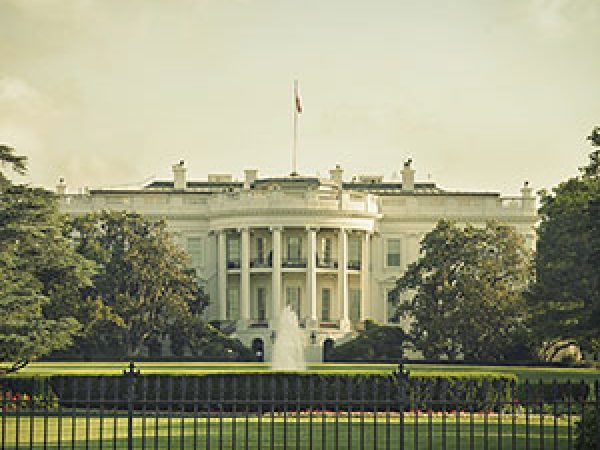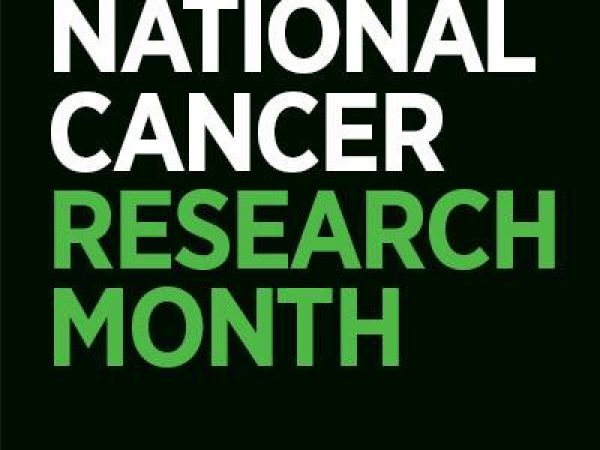How Can Engineering Help Fight Cancer? AACR to Host Special Conference on Engineering and Physical Sciences
The American Association for Cancer Research (AACR) will host its first ever Special Conference on Engineering and Physical Sciences in Oncology June 25-28 in Boston. Rakesh K. Jain, PhD, one of three co-chairs of the conference, shared some insights on the conference in phone and video interviews.
Last month, Jain received a National Medal of Science from President Obama, who praised his “pioneering research at the interface of engineering and oncology, including tumor microenvironment, drug delivery and imaging, and for groundbreaking discoveries of principles leading to the development and novel use of drugs for treatment of cancer and non-cancerous diseases.”
That’s a pretty apt description of the content of the meeting. Below are some highlights of our conversations with Jain, who is director of the Edwin L. Steele Laboratories for Tumor Biology at the Massachusetts General Hospital and the Andrew Werk Cook professor of radiation oncology (tumor biology) at Harvard Medical School:
What would you like the public to know about the ways engineering and physical sciences can improve cancer research and fuel progress?
In addition to biochemical and genetic abnormalities, cancer also harbors physical abnormalities. For example, during growth, tumors exert forces, as cells proliferate and pull on the structural components. These forces and stiffened extracellular matrix can both affect gene expression and cellular signaling. In addition, these forces can directly compress blood vessels, impairing oxygenation and drug delivery.
We are only beginning to understand the implications of the mechanopathology of cancer. The ability of engineers and physical scientists to identify and measure key features of the tumor’s physical microenvironment will help target these physical contributors to tumor progression. These new therapies would likely synergize with existing therapies targeting the biochemical and genetic components to improve treatment outcomes. Solid tumors exploit physical forces for their survival and growth. It is time for us to exploit our own knowledge of physics and engineering to fight back.
What is an example of a clinical practice that has improved as a result of integrating engineering into medicine?
Progress in every treatment modality for cancer relies on physical sciences and engineering. A large fraction of cancer patients receive radiation therapy. Physicists work very closely with radiation oncologists to ensure that patients receive prescribed radiation doses and dose distributions within acceptable degrees of accuracy. Radiotherapy has advanced tremendously with the development of new radiation techniques and advanced imaging.
Engineers are also creating new technologies to improve drug delivery and drug formulation and screening platforms used to identify biomarkers or test drug response during the course of personalized therapy. In complementary efforts, engineers and mathematicians are developing physiologically based pharmacokinetic models to predict drug distribution and efficacy. Chemotherapy has seen progress with new, more tumor-targeted, and less-toxic formulations, and molecularly-targeted therapeutics rely heavily on advances in various areas of engineering.
What areas of engineering and physical science are currently yielding the most exciting progress?
At the basic science level, a very exciting new direction is studying how physical forces modulate cancer progression and resistance to treatments. Understanding these interactions has the potential to impact the efficacy of all treatment modalities, old and new. Other areas include the development and implementation of cutting-edge technology for imaging, sequencing, bioinformatics, cell capture, micro-fluidics, precision medicine, drug screening, drug delivery, nanomedicine, immunotherapy, RNA-based therapies, and gene editing. All require different engineering disciplines to develop and deploy these technologies. These areas will be covered at this meeting.
How are engineering principles useful in drug development?
The microenvironment of tumors is abnormal, physically and biochemically. This abnormality fuels tumor progression, metastasis, immunosuppression, and treatment resistance. Drugs that can reengineer the tumor microenvironment and alleviate these abnormalities have the potential to improve the outcome of radiation, chemotherapy, and immunotherapy. The engineering approach of deconstructing a complex system to identify important interactions or key components will be necessary to fully understand the problems and identify viable targets.
At the conference, what session are you most looking forward to attending?
My co-chairs (Joan S. Brugge, PhD, the Louise Foote Pfeiffer professor of cell biology and director of the Ludwig Center at Harvard Medical School, and Robert S. Langer, ScD, a professor in the Department of Chemistry and Biomedical Engineering at Massachusetts Institute of Technology) and I chose these sessions very carefully and invited speakers who are the leaders in these areas. So, I’m looking forward to all sessions!
This meeting features a combination of abstracts presented by young investigators and research presented by some of the very seasoned researchers in your field. Why is it important to you to give these young researchers a chance to present at the conference?
This was an approach that we decided on to ensure that the best science will be presented at this conference. We wanted to highlight the most exciting work in the field, and this is coming not only from those who have been working in this area for some time, but also from the batch of new researchers. So these presentations will be an opportunity for young investigators to shine and gain recognition from leaders in the field. Additionally, three program leaders from the National Cancer Institute, the National Science Foundation, and Cancer Research UK will discuss opportunities for funding in this interdisciplinary area that will be useful to all conference attendees.
What inspiration do you hope these young researchers might gain from attending this conference?
I want them to know about all the exciting developments taking place, and to expose them to the new opportunities for research in the area of physical oncology. This is really a revolutionary time for cancer. The word “cure” was not associated with cancer until fairly recently, and now, immunotherapy has brought us to the beginning of a revolution. I think that advances in physical oncology will have similar impact in the near future.
I really enjoyed your anecdote in the video about attending the AACR Annual Meeting about 40 years ago! What took you to that meeting in Washington, D.C., and how did it influence you to change your career focus?
My co-mentors James Wei, ScD, a distinguished professor of chemical engineering at the University of Delaware, and the late Pietro Gullino, MD, chief of the Laboratory of Pathophysiology at the National Cancer Institute, encouraged me to attend this meeting and present my work. Gullino also introduced me to AACR CEO Margaret Foti, PhD, MD (hc), at that meeting!
I was so inspired by what I learned at the meeting that I decided to apply my background in chemical engineering to cancer research. I’ve gone on to attend the AACR Annual Meeting almost every year.
Do you expect that engineers and physical scientists will play a part in Vice President Biden’s National Cancer Moonshot Initiative?
I hope so! Experts in physical sciences and engineering have a lot to offer and we hope to be a part of this important initiative. Maybe President Obama can talk to Vice President Biden about our work.




